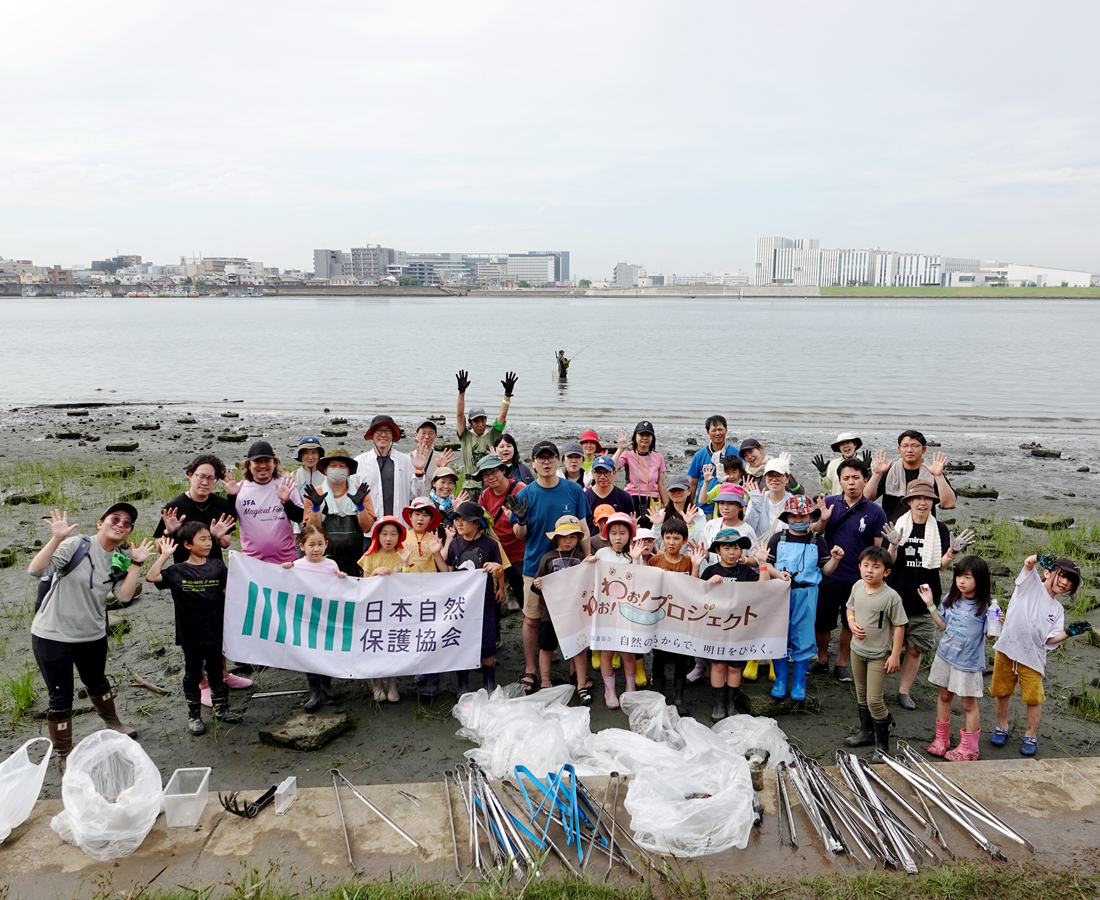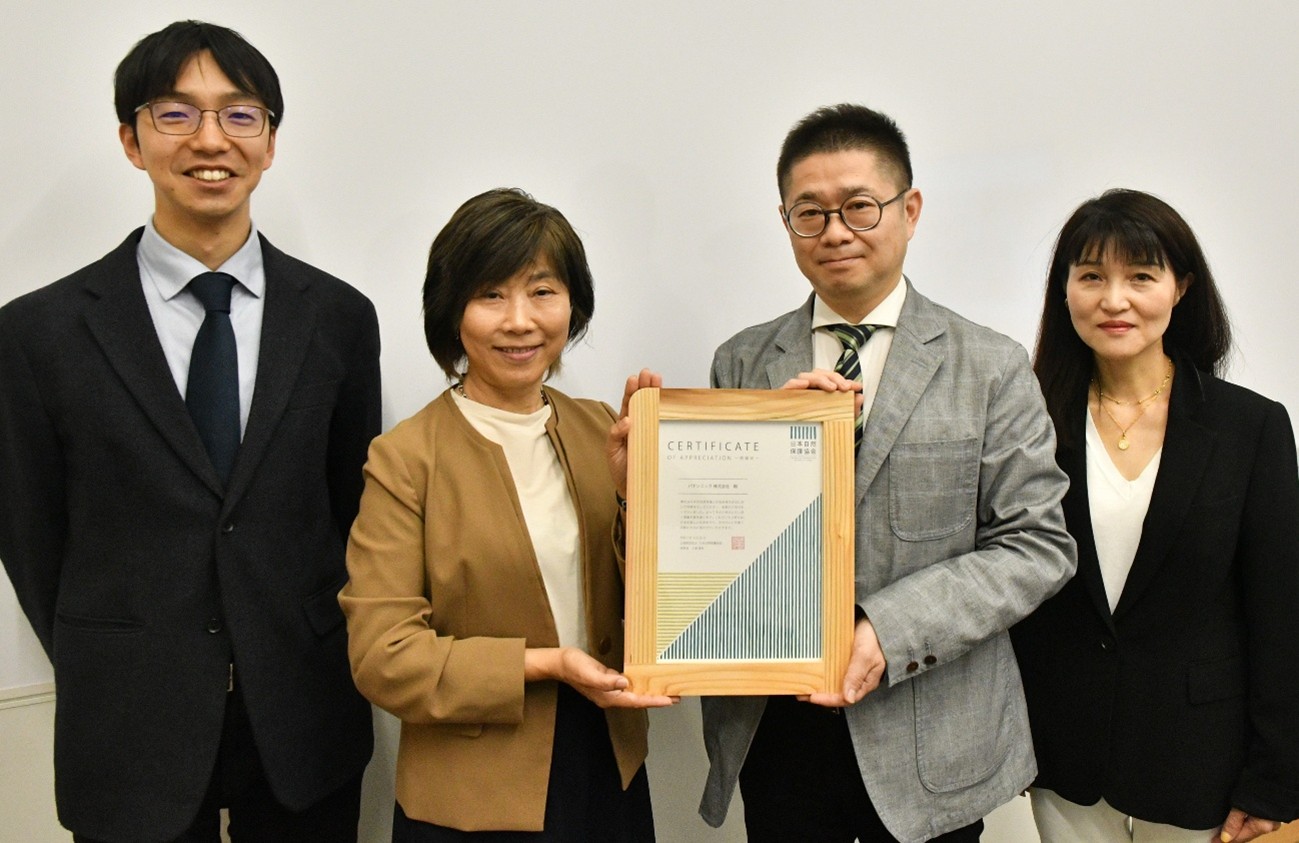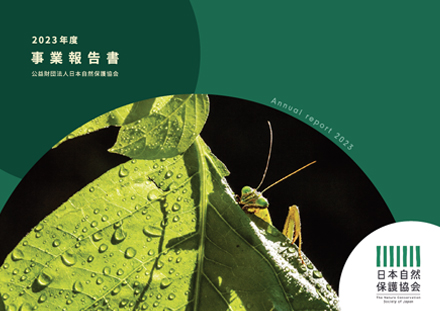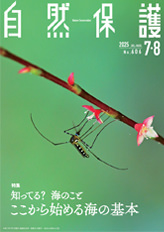2023.03.06(2025.04.18 更新)
浜を読む⑤ 海からの贈り物ラック~きれいは汚い,汚いはきれい~(後編)
読み物
専門度:
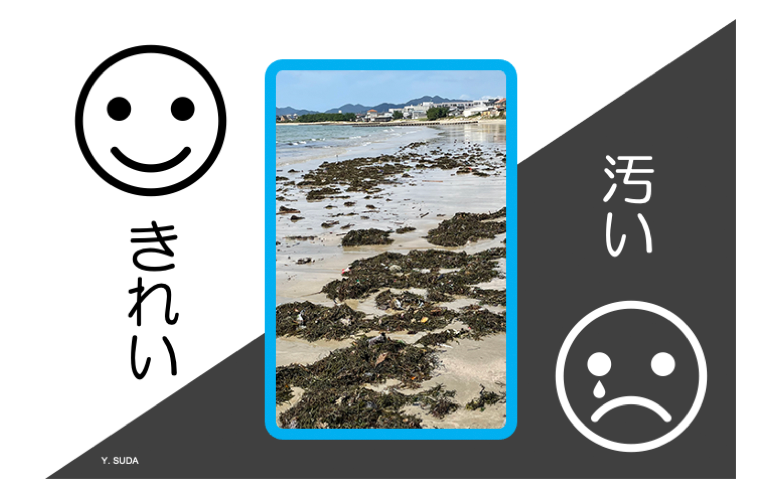
▲ラックには、きれい(良い面)と汚い(悪い面)がある (本文図14の一部)
テーマ:海の保全砂浜ムーブメント
フィールド:海岸海砂浜
日本は、海に囲まれた島国ですが、砂浜の自然についてはまだまだわからないことが多くあります。シリーズ「浜を読む」では、砂浜研究論文を紹介しながら、砂浜の自然がどんな環境なのかをご紹介しています。
砂浜にはいろいろなものが漂着します。そんな出会いも砂浜の魅力のひとつ。第5回は、海藻などの打ち上げ「ラック」について前後編でご紹介します。
水産大学校名誉教授
須田有輔
3.ラックの逆襲
グリーンタイド/ゴールデンタイド
アオサのような緑藻の大量漂着は,その色からグリーンタイド(green tide),ホンダワラなど褐藻の場合はゴールデンタイド(golden tide)と呼ばれ,世界の海岸における深刻な環境問題の一つとなっています(Pilkey and Cooper 2014; Smetacek and Zingone 2013)。
・グリーンタイド ~死をもたらす緑の海藻~
日本でも内湾域の海岸では,以前から頻繁にアオサが大量漂着し(図11),そのたびに,観光への影響や除去作業などで地元が混乱に陥ってきました。しかし,フランスではそれだけにとどまらず,堆積して腐敗したアオサ類(Ulva armoricana,U. rotundata)から発生した硫化水素ガスが原因ではないかとみられる,人の死亡事故が起きています(Boissoneault 2020; Chrisafis 2019; Nikolic 2019)。大西洋に面したフランスのブルターニュ地方は農畜産業が盛んな土地ですが,1970年代から地元の海岸に大量のアオサが漂着するようになりました。農畜産業で用いる肥料由来の過剰な窒素分が付近の海域に流入し,富栄養化をもたらしたことが原因だと考えられています(Charlier et al 2007; Schreyers et al 2021)。それ以降,犬,イノシシ,馬などの動物が死亡しており,アオサの大量漂着がもたらす危険が懸念されてきましたが,人の死亡事故を防ぐことはできなかったのです。現在,流入する河川の窒素濃度は低下しているものの,今のところ,グリーンタイドの減少にはつながっていないようです(Schreyers et al 2021)。
被害者こそ出ていませんが,グリーンタイド は黄海沿岸,韓国沿岸でも深刻な問題となっています(Kwon et al 2017; Smetacek and Zingone 2013; Wang and Wu 2021; Zhang et al 2019; Zhou et al 2015)。中国の黄海沿岸では,2008年にスジアオノリ(Ulva prolifera)によるグリーンタイドが発生し,北京オリンピックのヨット会場をひかえた青島市では,その対策に追われました(Smetacek and Zingone 2013; Zhang et al 2019)。その後も毎年グリーンタイドが発生しています。韓国南部の済州島の港にも大量のボタンアオサ(Ulva conglobata)やアナアオサ(U. pertusa)が漂着しますが,ここでは,地下水経由の栄養塩がアオサの繁茂を促進していると考えられています(Kwon et al 2017)。
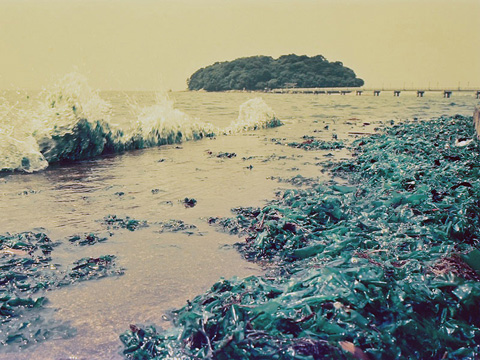 図11:アオサに被われた景勝地の海岸(愛知県蒲郡,1989年)
図11:アオサに被われた景勝地の海岸(愛知県蒲郡,1989年)
・ゴールデンタイド ~大西洋サルガッサム巨大ベルト~
「今にして思えば,2011年はほんの始まりに過ぎなかった」(Langin 2018)。この年を境に,カリブ海やメキシコ湾沿岸の海岸には,毎年のように大量のサルガッサム(Sargassum)が漂着するようになりました。過去に例のない莫大な量のラックは,漁業や観光に大きく依存する同地域の経済に深刻な打撃を与え,バルバドスのように国によっては国家緊急事態宣言が出されるまでになりました。2022年には,6月の1ヶ月間だけで,過去最高の2,420万トンものサルガッサムが打ち上げられたとの報道がありました(Kovac 2022)。グリーンタイドと同じく,サルガッサムの大量漂着は,人の健康にも大きな影響を及ぼす危険があります(Resiere et al 2018, 2021)。
サルガッサムはホンダワラ類の海藻(褐藻類)のことで,藻体を浮かせるための気泡(vesicle)と呼ばれるフロートのような小器官を多数もつことが特徴です。世界で300種以上が知られ(Guiry 2022),日本にもヒジキ,アカモク,ノコギリモクをはじめ約60種が分布しています(島袋 2016)。ホンダワラ類は,流れ藻やガラモ場と呼ばれる藻場を構成する主要な海藻として知られています。このうち,一生を海面に漂って過ごす2種(Sargassum natansの2品種とS. fluitans)が,件のサルガッサムです(Amaral-Zettler et al 2017; Davis et al 2021; Schell et al 2015)。
「サルガッサム(サルガッソー)」と言えば,多くの人が,「魔の海」とか「船の墓場」などの伝説で知られるサルガッソー海(Sargasso Sea)を思い浮かべるかもしれません。実際,サルガッソー海には,その名の通りサルガッサムが大量に漂流しており,当初は,ここから流れ出したサルガッサムがカリブ海やメキシコ湾岸に流れ着いたと考えられていました。しかし,その後の研究により,この大量の流れ藻はサルガッソー海起源ではなく,アフリカ南西岸沖に端を発するもので,海流に乗り大西洋を横断し,ブラジル東岸をかすめカリブ海,そしてメキシコ湾まで到達することがわかってきました(Wang et al 2019)。衛星画像ではっきり捉えられる,長さ9,000 kmにも及ぶこの巨大な海藻の帯は,大西洋サルガッサム巨大ベルト(Great Atlantic Sargassum Belt: GASB)と名付けられました。
GASBの発生には,コンゴ川やアマゾン川からの栄養塩の供給,アフリカ沿岸沖での沿岸湧昇や赤道湧昇による栄養塩供給,サハラダスト(Saharan dust)やアフリカ中西部におけるバイオマスバーニング(biomass burning)に由来するミネラルの供給など,いくつもの要因が関わっています(Lapointe et al 2021)。サハラダストとは貿易風に乗って大西洋や南北アメリカ大陸に運ばれる,北アフリカのサハラ砂漠由来の砂の塵のことです。砂塵に含まれる鉄分が,大西洋やアマゾン熱帯雨林の肥沃化に寄与しているといわれています。余談ですが,2020年に米国南部の大都市を襲った大規模なサハラダストは,「ゴジラ級のサハラダスト(”Godzilla” Saharan dust)」と呼ばれました(Irfan 2020)。バイオマスバーニングは,焼畑農業や山火事などにより,自然や農耕の植生,土壌の有機物が燃える火災です。燃焼により発生したリンがGASBの一つの原因だと考えられています。近年,世界各地で多発する森林火災は,バイオマスバーニングに他なりません。
米国海洋気象庁(NOAA)とサウスフロリダ大学(USF)は共同で,試験的に,カリブ海,メキシコ湾一帯のサルガッサム海藻の週間漂着予報”Experimental Weekly Sargassum Inundation Report”をWEB上で公開しています(NOAA and USF)。GASBではありませんが,スペインやフランスなどで大きな問題となっている侵略的外来種のフクリンアミジ(Rugulopteryx okamurae)の漂着予測のため,ドローンや衛星を利用したモニタリングシステムが開発されつつあります(Roca et al 2022)。
【用語】
湧昇:海洋の底層から表層に向かって海水が流れる現象。底層に溜まっていた栄養塩が湧昇によって表層に供給されることで,その海域の生産力が高くなる。
バクテリアの繁殖地
ラックが糞便性汚染指標細菌(fecal indicator bacteria: FIB)(いわゆる大腸菌と呼ばれる細菌)の溜まり場や繁殖場となり,ラックのみならずラック周囲の砂の中がFIBに汚染されることがあります(Goodwin et al 2017; Halliday et al 2014; Imamura et al 2011; Solo-Gabriele et al 2016; Suzuki et al 2021; Whitman et al 2014)。そのため,公衆衛生上,とくに海水浴場や観光地として利用されている砂浜では,ラックの除去が望ましいとされています(Imamura et al 2011; Suzuki et al 2021)。
砂浜の砂は海水以上にFIBに汚染されている場合があります(Bonilla et al 2007; Imamura et al 2011)。海水に対する環境基準は日本でもありますが,砂浜の砂に対する環境基準は今のところ存在しません(Suzuki et al 2021)。ラック由来以外にも,砂は感染症をもたらす細菌や鉤虫などの寄生虫に汚染されていることがあるので,場所によっては素足で歩くことさえ避けたほうが良いと言われています(Pilkey and Cooper 2014)。
有毒物質の運び手
ラックには水銀(Graca et al 2022)やカドミウム(Franzén et al 2019)などの有害物質が含まれることがあります。これらの物質は,ラックの分解によって溶け出して砂浜を汚染したり,伝統的にラックが肥料として利用されている地域では農地の汚染を招くおそれがあります。カリブ海諸島では,大西洋サルガッサム巨大ベルト(GASB)によるラックが大量に漂着するようになってから,海岸のヒ素濃度が高まってきました(Devault et al 2021)。
温室効果ガスの発生
海藻・海草は,ブルーカーボンの貯留源としてたいへん重要視されています(Sogin et al 2022)。しかし,浜に流れ着いた海藻・海草は,分解する過程で二酸化炭素やメタンを発生することで,一転して温室効果ガスの排出源ともなります(Lastra et al 2018; Liu et al 2019)。
スペインで行われた研究では,0.5℃以下のわずかな気温上昇でもラックの分解が加速され,二酸化炭素の排出が多くなることがわかりました(Lastra et al 2018)。また,二酸化炭素の排出程度はラックの鮮度によっても変わり,波打ち際にある湿気が多いものは,浜の上部の乾燥したものより多く排出します(Liu et al 2019)。このことから,打ち上げられたラックを波打ち際に放置したままにせず,乾燥した場所に移動させることで温室効果ガスの排出を抑える効果が期待できます。
メタンは二酸化炭素に次いで地球温暖化に及ぼす影響が大きい温室効果ガスで,温暖化効果は二酸化炭素の約25倍もあるとされています。メタンの発生源としては,化石燃料の燃焼,ウシのげっぷ,廃棄物,湿地や融けた永久凍土などが知られています。それに加えて,ラックも発生原因の一つとなっていることが明らかとなってきました(Björk et al 2023; Liu et al 2019; Misson et al 2020, 2021)。
【用語】
ブルーカーボン:海洋生態系に取り込まれた炭素のこと。国連環境計画(UNEP)のレポートにおいて名付けられた(Nellemann et al eds 2009)。
4. 新たな資源として
一方,ラックを安価で安定供給できる原料とするには,まだ解決すべき課題が多くあります。たとえば,ラックには大量の砂が絡まっており,砂の除去が安価で効率よく行える技術が必要です。ヒ素(Davis et al 2021; Devault et al 2021),水銀(Graca et al 2022),カドミウム(Franzén et al 2019)などの有毒物質が存在することも大きな不安です。また,自然のラックは必ずしも安定して浜に漂着するわけではなく,季節,海洋・気候条件などに左右されます。解決すべき課題は大きいですが,ラックに対する期待は高まっています。
・エネルギー源
バイオメタン(biomethane)は,有機物の分解過程で発生するバイオガス(biogas)を精製して,メタン濃度を90%以上にしたものです。すでに世界中にバイオメタン生産の企業が存在し,一般家庭でも利用されている国がありますが,今のところ,原料としては生ごみ,畜産・農業廃棄物などが主です。ラックは新たな原料として期待されています(Barbot et al 2016)。
合成ガス(syngas)は,主に水素や一酸化炭素からなるガスで,さまざまな石油化学製品の製造に用いられています。石炭,天然ガス,バイオマス原料などから作られています。バルト海沿岸国では,打ち上げられたヒバマタ属の褐藻Fucus vesiculosus,緑藻のカワシオグサCladophora glomerata,スギノリ目の紅藻Furcellaria lumbricalis,海草のアマモZostera sp.を用いた,合成ガス生産の実証試験が行われています(Vincevica-Gaile et al 2022)。
バイオエタノール(bioethanol)は,トウモロコシ,サトウキビ,木質バイオマスなどを原料に生産されます。少し前からは,天然の海藻も新たな原料として注目されるようになってきましたが,ラックについてはまだ可能性が指摘されている段階に留まっています(Pardilhó et al 2022a)。しかし,バイオエタノールの需要が世界的に高まり,それに伴い食糧や飼料としてのトウモロコシの不足が大きな問題となり,代替の原料探しは喫緊の課題です。ロシアによるウクライナ侵攻も,食糧や飼料不足に拍車をかけています。今後,原料としてのラックに急速に関心が高まるかもしれません。
バイオコール(biocoal)は,有機廃棄物,木質バイオマス,下水汚泥などを原料として作る炭化燃料です。石炭にバイオコールを混ぜることで,二酸化炭素の排出量が軽減できるという効果があります。ドイツではラックを利用したバイオコールの研究開発が行われています(Chubarenko et al 2021)。
・コンポスト(堆肥)や土壌改良材
打ち上げられたラックのコンポスト化の例は,多くの海藻種類で知られています(Patón et al 2023)。リサイクル先進国として知られるドイツでは,回収したラックもリサイクルする制度になっており,その対応の一つとしてコンポスト化が行われています(Chubarenko et al 2021)。ラックを混ぜたコンポストは植物の成長を促進することがわかり,将来的には農業用への展開も期待されています。スペインでは,侵略的外来種に指定されている褐藻フクリンアミジ(Rugulopteryx okamurae)の有効利用法として,ゴキブリ類(Eublaberus spp.)(ゴキブリ堆肥 blatticompost),ミミズ類(Dendrobaena veneta,Eisenia fetida)(ミミズ堆肥 vermicompost),アメリカミズアブ(Hermetia illucens)などの無脊椎動物を用いた,コンポスト化の研究が進められています(Patón et al 2023)。
バイオ炭(biochar)は,バイオマスを無酸素あるいは低酸素条件下で300℃以上に加熱して作られる炭で,土壌の改善効果があります(Macreadie et al 2017; Wen et al 2022)。
・飼料・養殖魚の餌
スペインではコイ科のソウギョ養殖の餌にラックを添加した研究が行われ,ラックはソウギョ稚魚の脂肪分を抑え,肝臓の活性を高める効果をもつことが認められました(Galindo et al 2022)。ちなみに,ソウギョは世界の淡水養殖魚のうちもっとも生産量が多い魚種で,2020年の統計では世界で約580万トン(11.8%)でした(FAO 2022)。ブラジルでは,ラックとして打ち上げられた12種の海藻について栄養成分の分析が行われました。その結果,とくに褐藻類アミジグサ目のSpatoglossum schroederi,Dictyopteris jolyana,紅藻類イギス目のAlsidium seaforthii,A. triquetrum,Osmundaria obtusiloba(カエリナミ)では,食物繊維や多価不飽和脂肪酸などの機能性成分が多く,養殖用飼料の添加剤として有望視されています(Mandalka et al 2022)。ポルトガルでは,ラックから脂肪酸,色素,多糖類の抽出が試みられています(Pardilhó et al 2023)。
・住宅用断熱材
ドイツでは,地中海産の海草,ポシドニア(Posidonia oceanica)とアマモ(Zostera marina)のラックを利用した住宅用断熱材の実証研究が行われ,ラック製断熱ボードは,一般的な木製に比べて耐火性が高く,安価であることがわかりました(Kuqo and Mai 2022)。
【用語】
バイオマス:生態学用語としては,ある時点での任意の空間に存在する生物体の量。エネルギーや産業資源の分野では,木質片,農畜産廃棄物,食品残渣,生ごみなど生物由来の有機物資源を指す。
INNOVA(イノバ):気候変動に関連した地域チャレンジのための革新的サービスの開発を目的とした,EUの研究プロジェクトの一つ。
CONTRA(コントラ): EUの地域間協力プログラムの一つ。ごみ扱いされるラックを新たな資源や資産に仕立てるための研究開発プロジェクト。Conversation of a Nuisance to a Resource and Asset(不快物を資源と資産にするための会議)の頭文字をとったもの。
バイオリファイナリー:バイオマスを原料として,エネルギー源としてのバイオ燃料,化学製品,バイオ製品を生産する技術や産業。
5.ラックの危機
ビーチクリーン
海水浴場や観光地の砂浜の管理,あるいは地元の砂浜の環境保全のため,世界各地でビーチクリーンが行われています。ビーチクリーンは砂浜の環境保全にとって大切な活動ですが,問題なのは,ラックがごみとして扱われ,除去の対象となっていることがあることです。
世界各地の砂浜で,ビーチクリーン用の機械を使ったごみの除去や砂表面の整地が行われていますが(図12),その際ラックがごみといっしょに取り除かれてしまいます。カリフォルニアやスコットランドの砂浜では,機械を使ったビーチグルーミング(beach grooming)あるいはビーチレーキング(beach raking)と呼ばれるビーチクリーン作業によってラックが除去されたことで,ラックに集まっていた端脚類,等脚類,甲虫,ハエなど小動物の多様性や個体数が減りました(Dugan et al 2003; Gilburn 2012; Schooler et al 2019)。ラックには,砂浜生物の生息場所や餌など砂浜の自然にとって大事な働きがあるので,ラックを除去することは,海と陸のインターフェイス役としての砂浜の機能を損ねることにつながります(Rodil et al 2018)。単に「きたならしい」という理由だけでラックを取り除くことは,慎重に考えないといけません。「砂浜の見た目をきれいにする」ことがその砂浜の自然にとって好ましいことなのか,ラックの働きを考えた上で,本当に除去する必要があるのかどうかを決めるべきでしょう。
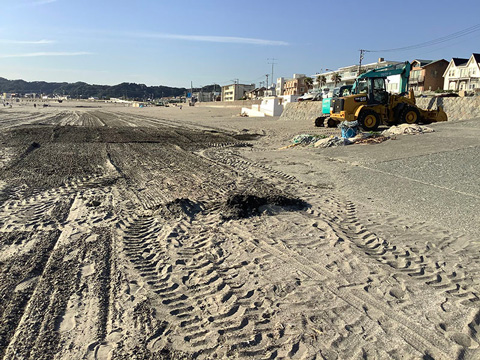 図12:機械を使ったビーチクリーンと整地された浜(撮影・NACS-J)
図12:機械を使ったビーチクリーンと整地された浜(撮影・NACS-J)
しかし,海水浴場や観光地の砂浜のように,ラックよりも利用者の利便性や経済効果など人や社会の都合を優先せざるを得ない場合があります(図13)。また,大量に漂着すれば,安全や衛生面からも放置できなくなります。砂浜の「見た目の美しさ」を優先するのか,「本来の砂浜の姿」を優先させるのか,個々のケースに応じた判断が必要です。街から海に流れ出る栄養分の変化が海藻の大発生を招いている場合には、その原因を排除することも必要でしょう。
各種の砂浜認証制度においても,機械力によってラックを除去することはとくに勧められてはいません(Zielinski et al 2019)。国際的な砂浜認証を代表するブルーフラッグ(Blue Flag)の基準でも,利用者にとって安全や衛生上問題にならない限り,浜に残しておくべきものとされています(FEE 2021)。わずかなラックも取り除こうとするのではなく,地中海沿岸国で行われてきた,ラック(ポシドニアのバンケット)の存在を受け入れ,むしろラックがもつ生態系サービスを砂浜の保全に活かすことで,観光地としての砂浜の価値を高めようという取り組み(POSBEMEDプロジェクト)は(IUCN 2022; IUCN and Enalia Physics Environmental Research Centre 2022; Otero et al 2018),今後のラック管理にとって一つの参考になるかもしれません。
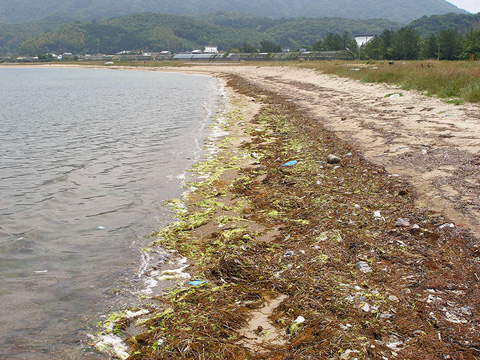
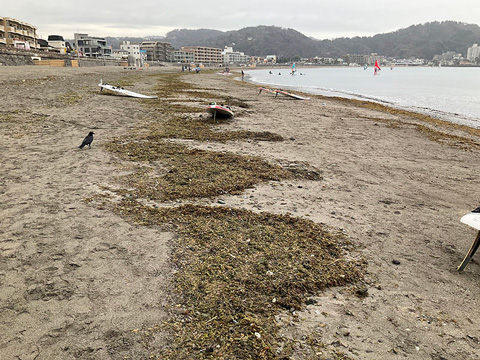
図13:海岸管理者を悩ませる,観光地や海水浴場のラック。(右撮影・NACS-J)
海岸構造物
護岸,突堤,離岸堤など海岸構造物が砂浜生態系に及ぼす影響については,数多くの研究が行われていますが,ラックへの影響を論じたものはあまりありません(Heerhartz et al 2014, 2015)。それでも,海岸構造物の設置によってラックの量が減少することが示されています。海岸構造物の設置によって端脚類や等脚類など砂浜生物が減少するとした報告は多くありますが,その中には,構造物がラックの減少を招き,それによって間接的に砂浜生物に影響が及んだと考えられる例があります(Laurino et al 2022)。一方,港湾の防波堤などの建設により,ラックの移動が遮られ,付近の海岸に漂着し,悪臭などの問題が発生したという例もあります(Pattiaratchi and Wijeratne 2019)。
気候変動
ラックの供給は,ハリケーンや嵐など極端な気候現象と強く関係すると考えられますが(Defeo et al 2021; Laurino et al 2023),気候変動がラックに具体的にどのような影響を及ぼすのかについては研究がほとんどなく,はっきりしたことはわかっていません。
大量のラックが打ち寄せるバルト海沿岸国では,この問題への関心が高まっています。供給元である藻場の生育環境が変化したり,ラックの輸送経路上の気象・海象条件が変わることで,ラックの量,構成種,頻度,時期などが変わる可能性があります(Stelljes 2021)。たとえば,現在のバルト海の水温は,主なラック構成種であるブラダーラック(bladderwrack)と呼ばれるヒバマタ属の褐藻Fucus vesiculosusや海草のアマモZostera marinaの生育に適した水温の上限に近づいており,このまま上昇が続けば生育に影響が及び,間接的にラックの供給にも変化が現れるかもしれません(Bobsien 2014; Graiff et al 2015; Stelljes 2021)。また,海面上昇に伴う海岸侵食により,堆積物が巻き上げられることで海水の濁りが発生し,太陽光の入射が弱まり,巻き上がった堆積物が藻場に降りかかり,海藻・海草の生育に影響が及ぶ恐れがあります(Bobsien 2014; Mills and Fonseca 2003; Stelljes 2021)。
おわりに
河川や地下水を通して陸から海へ栄養物質が供給され,それらが沿岸生態系を支えていることは広く知られるようになりましたが,逆の方向,つまり海から陸への供給について論じられることはあまりありません。今回紹介したラックは,前回の「波の花」(浜を読む④)とともに,砂浜にとってたいへん重要な海からの贈り物です。健康で生き生きとした身体の状態を代謝が良いと言いますが,健康な身体と同様,砂浜に打ち上げられたラックでは化学変化やエネルギー変換が活発に行われるので,ラックは代謝のホットスポット(metabolic hotspot)とも呼ばれています(Coupland et al 2007; Heck et al 2008; Rodil et al 2018)。砂浜自体の生産力はそれほど高くないのに,多くの多様な生物に恵まれているのも,ラックのこのような働きが貢献しているからです(Ince et al 2007)。
しかしそんな大切な働きがあるにもかかわらず,海岸の観光や美化のために,ラックはごみと同じ扱いを受けているのが実情です。さらに,贈り物も度が過ぎれば災いに転じ,世界各地で問題となっている大量漂着したラックは,人間社会を脅かす存在にすらなっています。そうした中,災いの元から福をもたらそうと,ラックを新しいバイオマス資源として活用しようという動きもでてきています。
浜辺に打ち上げられたただの海藻にしか見えないラックですが,砂浜の自然のみならず人間社会にとって,良い面と悪い面をもつことがだんだんわかってきました(図14)。
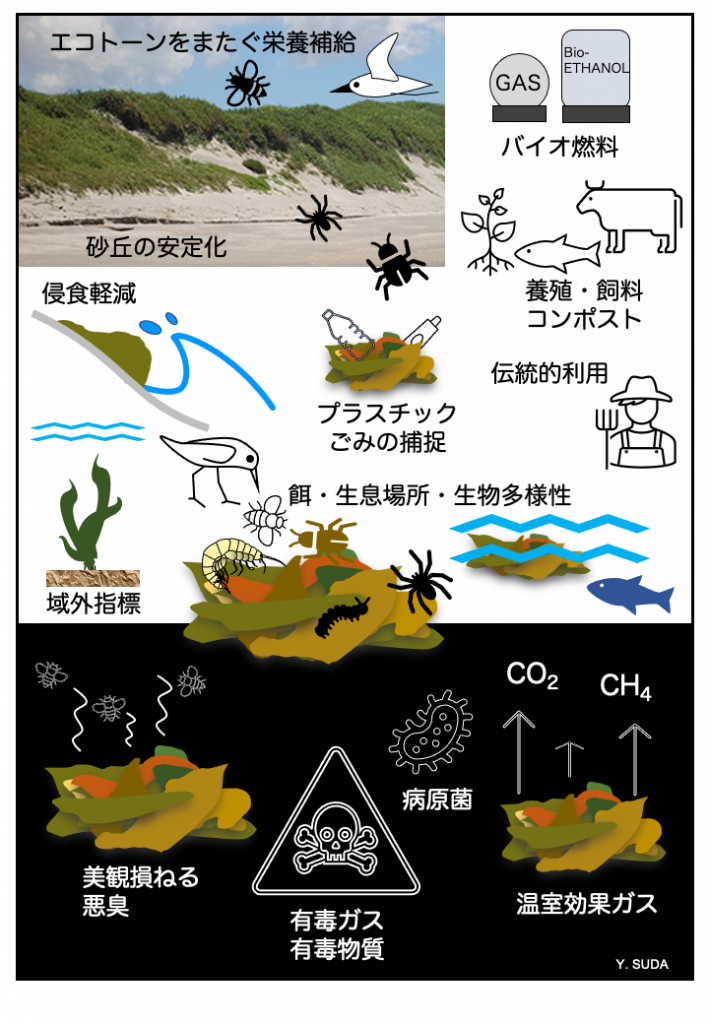 図14:ラックのきれい(良い面)/汚い(悪い面)イメージ図
図14:ラックのきれい(良い面)/汚い(悪い面)イメージ図
シリーズ「浜を読む」
- 浜を読む① ~砂浜という環境の多様性~
- 浜を読む② ~サーフゾーンの魚たち~
- 浜を読む③ ~浜辺のプラスチック~(前編)
- 浜を読む③ ~浜辺のプラスチック~(後編)
- 浜を読む④ ~波の花~
- 浜を読む⑤ ~海からの贈り物 ラック~きれいは汚い,汚いはきれい~(前編)
- 浜を読む⑤ ~海からの贈り物 ラック~きれいは汚い,汚いはきれい~(後編)
関連リンク
【参考文献】 前編でご紹介した文献とあわせて掲載しています。
- Al-Dulaimi O, Rateb ME, Hursthouse A, Thomson G, Yaseen M. 2021. The brown seaweeds of Scotland, their importance and applications. Environments, 8, 59
- Amaral-Zettler L, Dragone NB, Schell J, Slikas B, Murphy LG, Morrall CE, Zettler ER. 2017. Comparative mitochondrial and chloroplast genomics of a genetically distinct form of Sargassum contributing to recent “Golden Tides” in the Western Atlantic. Ecology and Evolution, 7, 516-525
- Andrades R, Gomes MP, Pereira-Filho GH, Souza-Filho JF, Albuquerque CQ, Martins AS. 2014. The influence of allochthonous macroalgae on the fish communities of tropical sandy beaches. Estuarine, Coastal and Shelf Science, 144, 75-81
- Angus S. 2007. De Tha Machair? Towards a machair definition. Scotland’s Nature Agency, 7-22
- Angus S. 2009. Dé tha cearr air a’mhachaire? Biodiversity issues for Scottish machair: an initial appraisal. The Glasgow Naturalist, 25 Supplement, 53-62
- Backlund HO. 1945. Wrack Fauna of Sweden and Finland Ecology and Chorology. Entomologiska Sällskapet I Lund, 236 pp
- Barbot YN, Al-Ghaili H, Benz R. 2016. A review on the valorization of macroalgal wastes for biomethane production. Marine Drugs, 14, 120
- Baring RJ, Lester RE, Fairweather PG. 2018. Trophic relationships among animals associated with drifting wrack. Marine and Freshwater Research, 69(8), 1248-1258
- Battisti C, Fanelli G, Filpa A, Cerfolli F. 2020. Giant reed (Arundo donax) wrack as sink for plastic beach litter: First evidence and implication. Marine Pollution Bulletin, 155, 111179
- Björk M, Rosenqvist G, Gröndahl F, Bonaglia S. 2023. Methane emissions from macrophyte beach wrack on Baltic seashores. Ambio, 52, 171-181
- Bobsien I. 2014. Mögliche Auswirkungen des Klimawandels auf den Blasentag (Fucus vesiculosus) und das Gewöhnliche Seegras (Zostera marina) in der Ostsee. RADOST-Berichtsreihe, 24, 38 pp
- Boissoneault L (Hakai Magazine). February 11 2020. “France’s Deadly Seaweed”
https://hakaimagazine.com/features/frances-deadly-seaweed/(2022.12.16閲覧) - Bonanno G, Orlando-Bonaca M. 2020. Marine plastics: What risks and policies exist for seagrass ecosystems in the Plasticene? Marine Pollution Bulletin, 158, 111425
- Bonilla TD, Nowosielski K, Cuvelier M, Hartz A, Green M, Esiobu N, McCorquodale DS, Fleisher JM, Rogerson A. 2007. Prevalence and distribution of fecal indicator organisms in South Florida beach sand and preliminary assessment of health effects associated with beach sand exposure. Marine Pollution Bulletin, 54, 1472-1482
- Borsje BW, van Wesenbeeck BK, Dekker F, Paalvst P, Bouma TJ, van Katwijk MM, de Vries MB. 2011. How ecological engineering can serve in coastal protection. Ecological Engineering, 37(2), 113-122
- Boudouresque CF, Meinesz A. 1982. Découverte de l’herbier de Posidonie. Cahier du Porc National de Port-cros, 80 pp
- Boudouresque CF, Pergent G, Pergent-Martini C, Ruitton S, Thibaut T, Verlaque M. 2016. The necromass of the Posidonia oceanica seagrass meadow: Fate, role, ecosystem services and vulnerability. Hydrobiologia, 781, 25-42
- Boudouresque CF, Ponel P, Astruch P, Barcelo A, Blanfuné A, Geoffroy D, Thibaut T. 2017. The high heritage value of the Mediterranean sandy beaches, with a particular focus on the Posidonia oceanica “banquette”: A review. Scientific Reports of the Port-Cros National Park, 31, 23-70
- Bridges TS, Wagner PW, Burks-Copes KA, Bates ME, Collier ZA et al. 2015. Use of natural and nature-based features (NNBF) for coastal resilience, Final Report. US Army Corps of Engineers, ERDC SR-15-1, 477 pp
- Brown AC, McLachlan A. 1990. Ecology of Sandy Shores. Elsevier, 328 pp
- Bryant DB, Bryant MA, Grzegorzewski AS. 2017. Erosion of coastal foredunes: A review on the effect of dune vegetation. ERDC/CHL CHETN-I-94, February 2017, US Army Corps of Engineers, 11 pp.
- Burlat L, Thorsteinsson T. 2022. Seasonal variation in the correlation between beach wrack and marine litter on a sandy beach in West Iceland. Marine Pollution Bulletin, 183, 114072
- Bussotti S, Guidetti P, Rossi F. 2022. Posidonia oceanica wrack beds as a fish habitat in the surf zone. Estuarine, Coastal and Shelf Science, 272, 107882
- Cardona L, García M. 2008. Beach-cast seagrass material fertilizes the foredune vegetation of Mediterranean coastal dunes. Acta Oecologica, 34, 97-103
- Cesarini G, Cera A, Battisti C, Taurozzi D, Scalici M. 2021. Is the weight of plastic litter correlated with vegetal wrack? A case study from a Central Italian beach. Marine Pollution Bulletin, 171, 112794
- Cesarini G, Secco S, Battisti C, Questino B, Marcello L, Scalici M. 2022. Temporal changes of plastic litter and associated encrusting biota: Evidence from central Italy (Mediterranean Sea). Marine Pollution Bulletin, 181, 113890
- Charlier RH, Morand P, Finkl CW, Thys A. 2007. Green tides on the Brittany coasts. Environmental Research, Engineering and Management, 3(41), 52-59
- Chrisafis A (The Guardian). September 8 2019. “‘It can kill you in seconds’: the deadly algae on Brittany’s beaches” https://www.theguardian.com/environment/2019/sep/08/it-can-kill-you-in-seconds-the deadly-algae-on-brittanys-beaches(2022.12.15閲覧)
- Chubarenko B, Woelfel J, Hofmann J, Aldag S, Beldowski J et al. 2021. Converting beach wrack into a resource as a challenge for the Baltic Sea (an overview). Ocean and Coastal Management, 200, 105413
- Colombini I, Chelazzi L. 2003. Influence of marine allochthonous input on sandy beach communities. Oceanography and Marine Biology, Annual Review, 41, 115-159
- Connell SD, Foster MS, Airoldi L. 2014. What are algal turfs? Towards a better description of turfs. Marine Ecology Progress Series, 495, 299-307
- Coupland GT, Duarte CM, Walker DI. 2007. High metabolic rates in beach cast communities. Ecosystems, 10, 1341-1350
- Crawley KR, Hyndes GA, Vanderklift MA, Revill AT, Nichols PD. 2009. Allochthonous brown algae are the primary food source for consumers in a temperate, coastal environment. Marine Ecology Progress Series, 376, 33-44
- Davis D, Simister R, Campbell S, Marston M, Bose S, McQueen-Mason SJ, Gomez LD, Gaillimore WA, Tonon T. 2021. Biomass composition of the golden tide pelagic seaweeds Sargassum fluitans and S. natans (morphotypes I and VIII) to inform valorisation pathways. Science of The Total Environment, 762, 143134
- Davis TJ, Keppel G. 2021. Fine-scale environmental heterogeneity and conservation management: Beach-cast wrack creates microhabitats for thermoregulation in shorebirds. Journal of Applied Ecology, 58(6), 1291-1301
- Defeo O, McLachlan A, Armitage D, Elliott M, Pittman J. 2021. Sandy beach social-ecological systems at risk: Regime shifts, collapses, and governance challenges. Frontiers in Ecology and the Environment, 19(10), 564-573
- Deidun A, Saliba S, Schembri PJ. 2007. Banquette faunal assemblages from groomed and ungroomed beaches on the Maltese islands. Rapport Commission International Mer Mediterranee, 38, 456
- Deidun A, Saliba S, Schembri PJ. 2009. Considerations on the ecological role of wrack accumulations on sandy beaches in the Maltese Islands and recommendations for their conservation management. Journal of Coastal Research, SI, 56, 410-414
- Deidun A, Saliba S, Schembri PJ. 2011. Quantitative assessment and physical characterisation of Posidonia oceanica wrack beached along the Maltese coastline. Biologia Marine Mediterranea, 18(1), 301-308
- Del Vecchio S, Jucker T, Carboni M, Acosta ATR. 2017. Linking plant communities on land and at sea: The effects of Posidonia oceanica wrack on the structure of dune vegetation. Estuarine, Coastal and Shelf Science, 184, 30-36
- Devault DA, Modestin E, Cottereau V, Vedie F, Stiger-Pouvreau V, Pierre R, Coynel A, Dolique F. 2021. The silent spring of Sargassum. Environmental Science and Pollution Research, 28, 15580-15583
- Dictionaries of the Scots Language. www.dsl.ac.uk
- Dugan JE, Hubbard DM. 2010. Loss of coastal strand habitat in southern California: The role of beach grooming. Estuaries and Coasts, 33, 67-77
- Dugan JE, Hubbard DM, McCrary MD, Pierson MO. 2003. The response of macrofauna communities and shorebirds to macrophyte wrack subsidies on exposed sandy beaches of southern California. Estuarine Coastal and Shelf Science, 58S, 25-40
- Dugan JE, Hubbard DM, Page HM, Schimel JP. 2011. Marine macrophyte wrack inputs and dissolved nutrients in beach sands. Estuaries and Coasts 34, 839-850
- Eamer JBR, Walker IJ. 2010. Quantifying sand storage capacity of large woody debris on beaches using LiDAR. Geomorphology, 118, 33-47
- Egglishaw HJ. 1958. The fauna of wrack beds. Newcastle University, PhD Thesis, 217 pp
- FAO. 2022. The State of World Fisheries and Aquaculture 2022. FAO; https://doi.org/10.4060/cc0461en
- Faria J, Prestes ACL, Moreu I, Martins GM, Neto AI, Cacabelos E. 2021. Arrival and proliferation of the invasive seaweed Rugulopteryx okamurae in NE Atlantic islands. Botanica Marina, 65(1), 45-50
- Feagin RA, Figlus J, Zinnert JC, Sigren J, Martínez ML et al. 2015. Going with the flow or against the grain? The promise of vegetation for protecting beaches, dunes, and barrier islands from erosion. Frontiers in Ecology and the Environment, 13(4), 203-210
- Feagin RA, Furman M, Salgado K, Martinez ML, Innocenti RA et al. 2019. The role of beach and sand dune vegetation in mediating wave run up erosion. Estuarine, Coastal and Shelf Science, 219, 97-106
- FEE (Foundation for Environmental Education). 2021. Blue Flag Beach Criteria and Explanatory Notes 2021.
https://static1.squarespace.com/static/55371ebde4b0e49a1e2ee9f6/t/5fbf70eee18c5c478ef4edfc/1606381808548/Beach+Criteria+and+Explanatory+Notes+2021.pdf - Filbee-Dexter K, Scheibling RE. 2014. Sea urchin barrens as alternative stable states of collapsed kelp ecosystems. Marine Ecology Progress Series, 495, 1-25
- Filbee-Dexter K, Wernberg T. 2018. Rise of turfs: A new battlefront for globally declining kelp forests. BioScience, 68(2), 64-76
- Franzén D, Infantes E, Gröndahl F. 2019. Beach-cast as biofertiliser in the Baltic Sea region-potential limitations due to cadmium-content. Ocean & Coastal Management, 169, 20-26
- 藤田大介. 2010. 第1章 藻場にはいろいろな変化がある, pp. 1-10. 藤田大介・村瀬 昇・桑原久実 編著. 藻場を見守り育てる知恵と技術. 成山堂書店, 278 pp
- 藤田大介・野田幹雄・桑原久実 編著. 2006. 海藻を食べる魚たち 生態から利用まで. 成山堂書店, 261 pp
- Galindo A, Rodríguez C, Reis DB, Marrero M, Acosta NG et al. 2022. Valorization of seaweed wracks: Inclusion as additive in diets for grass carp (Ctenopharyngodon idella). Aquaculture Nutrition, 2022, 6992682
- Garcia-Gómez JC, Florido M, Olaya-Ponzone L, Sempere-Valverde J, Megina C. 2021. The invasive macroalga Rugulopteryx okamurae: Substrata plasticity and spatial colonization pressure on resident macroalgae. Frontiers in Ecology and Evolution, 9, 631754
- Garcia-Gómez JC, Sempere-Valverde J, González AR, Martínez-Chacón M, Olaya-Ponzone L, Sánchez-Moyano E, Ostalé-Valriberas E, Megina C. 2020. From exotic to invasive in record time: The extreme impact of Rugulopteryx okamurae (Dictyotales, Ochrophyta) in the strait of Gibraltar. Science of The Total Environment, 704, 135408
- Gilburn AS. 2012. Mechanical grooming and beach award status are associated with low strandline biodiversity in Scotland. Estuarine, Coastal and Shelf Science, 107, 81-88
- Gómez M, Barreiro F, López J, Lastra M. 2018. Effect of upper beach macrofauna on nutrient cycling of sandy beaches: Metabolic rates during wrack decay. Marine Biology, 165: 133
- Gómez M, Barreiro F, López J, Lastra M. 2022. Evaluation of phenolic content of wrack debris on estuarine beaches: The effect on upper beach macrofauna. Marine Ecology, 43, e12692
- Goodwin KD, Schriewer A, Jirik A, Curtis K, Crumpacker A. 2017. Consideration of natural sources in a bacteria TMDL — Lines of evidence, including beach microbial source tracking. Environmental Science and Technology, 51, 7775-7784
- Graca B, Jȩdruch A, Bełdowska M, Bełdowski J, Kotwicki L, Siedlewicz G, Korejwo E, Popińska W, Łukawska-Matuszewska K. 2022. Effects of beach wrack on the fate of mercury at the land-sea interface ⎯ A preliminary study. Environmental Pollution, 315, 120394
- Graiff A, Liesner D, Karsten U, Bartsch I. 2015. Temperature tolerance of western Baltic Sea Fucus vesiculosus: growth, photosynthesis and survival. Journal of Experimental Marine Biology and Ecology, 471, 8-16
- Griffiths CL, Stenton-Dozey J. 1981. The fauna and rate of degradation of stranded kelp. Estuarine, Coastal and Shelf Science, 12, 645-653
- Griffiths CL, Stenton-Dozey J, Koop K. 1983. Kelp wrack and the flow of energy through a sandy beach ecosystems, pp 547-556. In McLachlan A, Erasmus T eds. Sandy Beaches as Ecosystems. Developments in Hydrobiology 19. Dr W. Junk Publishers, 757 pp
- Guiry MD in Guiry MD, Guiry GM. 06 April 2022. AlgaeBase. World-wide electronic publication, National University of Ireland, Galway. https://www.algaebase.org(2022.12.15閲覧)
- Halbert JN. 1920. The Acarina of the seashore. Proceedings of the Royal Irish Academy, 35, 106-152
- Halliday E, McLellan SL, Amaral-Zettler LA, Sogin ML, Gast RJ. 2014. Comparison of bacterial communities in sands and water at beaches with bacterial water quality violations. PLos ONE, 9(3), e90815
- Hanley ME, Hoggart SPG, Simmonds DJ, Bichot A, Colangelo MA, Bozzeda F, Heurtefeux H, Ondiviela B, Ostrowski R, Recio M, Trude R, Zawadzka-Kahlau E, Thompson RC. 2013. Shifting sands? Coastal protection by sand banks, beaches and dunes. Coastal Engineering, 87, 136-146
- Hanlon LM. 2021. First recorded account of arbuscular mycorrhizal fungi in sand dunes in South Easatern Australia: Biogeography and species richness. Journal of Coastal Research, 37(2), 280-290
- Harb TB, Chow F. 2022. An overview of beach-cast seaweeds: Potential and opportunities for the valorization of underused waste biomass. Algal Research, 62, 102643
- Heck KL, Carruthers TJB, Duarte CM, Hughes AR, Kendrick G, Orth RJ, Williams SW. 2008. Trophic transfers from seagrass meadows subsidize diverse marine and terrestrial consumers. Ecosystems, 11, 1198-1210
- Heerhartz SM, Toft JD, Cordell JR, Dethier MN, Ogston AS. 2015. Shoreline armoring in an estuary constraints wrack-associated invertebrate communities. Estuaries and Coasts; Published online DOI 10.1017/s12237-015-9983-x
- Heerhartz SM, Dethier MN, Toft JD, Cordell JR, Ogston AS. 2014. Effects of shoreline armoring on beach wrack subsidies to the nearshore ecotone in an estuarine fjord. Estuaries and Coasts, 37, 1256-1268
- Hemminga MA, Nieuwenhuize J. 1990. Seagrass wrack-induced dune formation on a tropical coast (Band d’Arguin, Mauritania). Estuarine, Coastal and Shelf Science, 31(4), 499-502
- Hendriks IE, Sintes T, Bouma TJ, Duarte CM. 2008. Experimental assessment and modeling evaluation of the effects of the seagrass Posidonia oceanica on flow and particle trapping. Marine Ecology Progress Series, 356, 163-173
- Hesp PA. 2002. Foredunes and blowouts: Initiation, geomorphology and dynamics. Geomorphology, 48, 245-268
- Hooton N, Miller D, Thetford M, Claypool S. 2019. Building coastal dunes with sea oats and surrogate wrack. University of Florida, Wildlife Ecology and Conservation, WEC364, 1-4
- Huang Y, Xiao X, Xu C, Perianen YD, Hu J, Holmer M. 2020. Seagrass beds acting as a trap of microplastics: Emerging hotspot in the coastal region? Environmental Pollution, 257, 113450
- Hyndes GA, Berdan EL, Duarte C, Dugan JE, Emery KA, Hambäck PA, Henderson CJ, Hubbard DM, Lastra M, Mateo MA, Olds A, Schlacher TA. 2022. The role of inputs of marine wrack and carrion in sandy-beach ecosystems: a global review. Biological Reviews, 97(6), 2127-2161
- Ievinsh G. 2022. Chapter 7 Where land meets sea: Biology and coastal soils, pp.151-172. In Giri B et al eds. Structure and Functions of Pedosphere. Springer, 439 pp
- Imamura GJ, Thompson RS, Boehm AB, Jay JA. 2011. Wrack promotes the persistence of fecal indicator bacteria in marine sands and seawater. FEMS Microbiology Ecology, 77, 40-49
- Ince R, Hyndes GA, Lavery PS, Vanderklift MA. 2007. Marine macrophytes directly enhance abundances of sandy beach fauna through provision of food and habitat. Estuarine, Coastal and Shelf Science, 74, 77-86
- Inglis G. 1989. The colonisation and degradation of stranded Macrocystis pyrifera (L.) C. Ag. by the macrofauna of a New Zealand sandy beach. Journal of Experimental Marine Biology and Ecology, 125, 203-217
- Innocenti RA, Feagin RA, Huff TP. 2018. The role of Sargassum macroalgal wrack in reducing coastal erosion. Estuarine, Coastal and Shelf Science, 214, 82-88
- Irfan U (VOX). July 1 2020. “The “Godzilla” Saharan dust cloud over the US, explained”
https://www.vox.com/2020/7/1/21307053/sahara-dust-storm-2020-godzilla-cloud-saharan-sunset(2021.8.11閲覧) - IUCN Centre for Mediterranean Cooperation. 2022. A Joint Charter of Committments for Mediterranean Beaches with Posidonia. POSBEMED2 Interreg Project, 26 pp
- IUCN Centre for Mediterranean Cooperation, Enalia Physics Environmental Research Centre. 2022. Enhancing Mediterranean coastal resilience with Posidonia oceanica and Nature-based Solutions. POSBEMED2 Interreg Project
- Jefferies RL. 2000. Allochthonous inputs: integrating population changes and food-web dynamics. Trends in Ecology and Evolution, 1(15), 19-22
- Jefferson MSW. 1903. Shore phenomena of Lake Huron. Journal of Geology, 11(1), 123-124
- Jiménez MA, Beltran R, Travest A, Calleja ML, Delgado-Huertas A, Marbá N. 2017. Aeolian transport of seagrass (Posidonia oceanica) beach-cast to terrestrial systems. Estuarine, Coastal and Shelf Science, 196, 31-44
- Jones HP, Nickel B, Srebotnjak T, Turner W, Gonzalez-Roglich M, Zavaleta E, Hole DG. 2020. Global hotspots for coastal ecosystem-based adaptation. PLoS ONE, 15(5), e0233005
- Joyce MA, Crotty SM, Angelini C, Cordero O, Ortals C, de Battisti D, Griffin JN. 2022. Wrack enhancement of post-hurricane vegetation and geomorphological recovery in a coastal dune. PLoS ONE, 17(8), e0273258
- Kelly E ed. 2005. The role of kelp in the marine environment. Irish Wildlife Manuals, No. 17. National Parks and Wildlife Service, Department of Environment, Heritage and Local Government, Dublin, Ireland, 123 pp
- Keys JH. 1918. A list of the maritime, sub-maritime and coast-frequenting Coleoptera of South Devon and South Cornwall, with especial reference to the Plymouth District. Journal of the Marine Biological Association of the United Kingdom, 11(4), 497-513
- King LAL. 1914. Notes on the habits and characteristics of some littoral mites of Millport. Proceedings of the Royal Physical Society, 19(6), 129-141
- Koop K, Newell RC, Lucas MI. 1982. Biodegradation and carbon flow based on kelp (Ecklonia maxima) debris in a sandy beach microcosm. Marine Ecology Progress Series, 7, 315-326
- Kovac A (Daily Mail). August 4 2022. “Paradise is choking: 24 million tons of Sargassum seaweed is smothering Caribbean coasts, killing wildlife, cutting off tourism and releasing toxic gases”
https://www.dailymail.co.uk/sciencetech/article-11081317/Caribbean-shores-choked-record-seaweed-thats-killing-wildlife-cutting-tourism.html(2022.12.15閲覧) - Krumhansl KA, Scheibling RE. 2012. Production and fate of kelp detritus. Marine Ecology Progress Series, 467, 281-302
- Kuqo A, Mai C. 2022. Seagrass leaves: An alternative resource for the production of insulation materials. Materials, 15, 6933
- Kwon HK, Kang H, Oh YH, Park SR, Kim G. 2017. Green tide development associated with submarine groundwater discharge in a coastal harbor, Jeju, Korea. Scientific Reports, 7, 6325
- Landsborough D. 1851. A popular history of British sea-weeds: Comprising their structure, fructification, specific characters, arrangement, and general distribution, with notices of some of the fresh-water algae, 2nd ed. Reeve and Benham, London, 400 pp
- Langin K. 2018. Seaweed masses assult Caribbean islands. Science, 360(6394), 1157-1158
- Lapointe BE, Brewton RA, Herren LW, Wang M, Hu C, McGillicuddy DJ Jr, Lindell S, Hernandez FJ, Morton PL. 2021. Nutrient content and stoichiometry of pelagic Sargassum reflects increasing nitrogen availability in the Atlantic Basin. Nature Communications, 12:3060
- Lastra M, López J, Neves G. 2015. Algal decay, temperature and body size influencing trophic behaviour of wrack consumers in sandy beaches. Marine Biology, 162, 221-233
- Lastra M, López J, Rodil IF. 2018. Warming intensify CO2 flux and nutrient release from algal wrack subsidies on sandy beaches. Global Change Biology, 24(8), 3766-3779
- Laurino IRA, Checon HH, Corte GN, Turra A. 2022. Does coastal armoring affect biodiversity and its functional composition on sandy beaches? Marine Environmental Research, 181, 105760
- Laurino IRA, Lima TP, Turra A. 2023. Effects of natural and anthropogenic storm-stranded debris in upper-beach arthropods: Is wrack a prey hotspot for birds? Science of The Total Environment, 857, 159468
- Lenanton RCJ, Caputi N. 1989. The roles of food supply and shelter in the relationship between fishes, in particular Cnidoglanis macrocephalus (Valenciennes), and detached macrophytes in the surf zone of sandy beach. Journal of Experimental Marine Biology and Ecology, 128, 165-176
- Lenanton RCJ. 1982. Alternative non-estuarine nursery habitats for some commercially and recreationally important fish species of south-western Australia. Australian Journal of Marine and Freshwater Research, 33, 881-900
- Leroux SJ, Loreau M. 2008. Subsidy hypothesis and strength of trophic cascades across ecosytems. Ecology Letters, 11, 1147-1156
- Liebowitz DM, Nielsen KJ, Dugan JE, Morgan SG, Malone DP, Largier JL, Hubbard DM, Carr MH. 2016. Ecosystem connectivity and trophic subsidies of sandy beaches. Ecosphere, 7(10), 1-19, e01503
- Liu S, Trevathan-Tackett SM, Lewis CJE, Ollivier QR, Jiang Z, Huang X, Macreadie PI. 2019. Beach-cast seagrass wrack contributes substantially to global greenhouse gas emissions. Journal of Environmental Management, 231, 329-335
- ローカルフレンズ制作班 (NHK). 2022.7.14. “”拾い昆布”で広尾町の朝は始まった”,
https://www.nhk.or.jp/hokkaido/articles/slug-na6fc82414223 - Macreadie PI, Trevathan-Tackett SM, Baldock JA, Kelleway JJ. 2017. Converting beach-cast seagrass wrack into biochar: A climate-friendly solution to a coastal problem. Science of The Total Environment, 574, 90-94
- Mandalka A, Cavalcanti MILG, Harb TB, Fujii MT, Eisner P, Schweiggert-Weisz U, Chow F. 2022. Nutritional composition of beach-cast marine algae from the Brazilian coast: Added value for algal biomass considered as waste. Foods, 11, 1201
- Manzolli RP, Blanco D, Portz L, Yanes A, Zielinski S, Agudelo CAR, Suarez A. 2022. Large wood debris contributes to beach ecosystems but Colombian beachgoer’s do not recognize it. Sustainability, 14, 8140
- Marsh SJ. 2008. Biodiversity and ecosystem processes in the strandline: The role of species identity, diversity, interactions and body size. Ph.D Thesis, University of Plymouth, 304 pp
- Mateo MA, Sánchez-Lizaso JL, Romero J. 2003. Posidonia oceanica ‘banquettes’: a preliminary assessment of the relevance for meadow carbon and nutrients budget. Estuarine, Coastal and Shelf Science, 56, 85-90
- McLachlan A. 1983. Sandy beach ecology: A review, pp. 321-380. In McLachlan A, Erasmus T eds. Sandy Beaches as Ecosystems. Developments in Hydrobiology 19. Dr W. Junk Publishers, 757 pp
- Mellbrand K, Lavery PS, Hyndes G, Hambäck PA. 2011. Linking land and sea: Different pathways for marine subsidies. Ecosystems, 14, 732-744
- Mills KE, Fonseca MS. 2003. Mortality and productivity of eelgrass Zostera marina under conditions of experimental burial with two sediment types. Marine Ecology Progress Series, 255, 127-134
- Misson G, Mainardis M, Incerti G, Goi D, Peressotti A. 2020. Preliminary evaluation of potential methane production from anaerobic digestion of beach-cast seagrass wrack: The case study of high-Adriatic coast. Journal of Cleaner Production, 254, 120131
- Misson G, Mainardis M, Marroni F, Peressotti A, Goi D. 2021. Environmental methane emissions from seagrass wrack and evaluation of salinity effect on microbial community composition. Journal of Cleaner Production, 285, 125426
- Mossone P, Guala I, Simeone S. 2019. Posidonia banquettes on the Mediterranean beaches: To what extent do local administrators’ and users’ perceptions correspond? pp 225-234. In Garguilo C, Zoppi C eds. Planning, nature and ecosystem services. FedOAPress
- 村瀬 昇. 2003. ノコギリモク, pp. 65-75. 能登谷正浩 編著. 藻場の海藻と造成技術. 成山堂書店, 267 pp
- 村瀬 昇. 2010. 第3章 藻場の衰退で検討すべき環境要因, 3.1 水温:高水温の影響の現れ方, pp. 33-38. 藤田大介・村瀬 昇・桑原久実 編著. 藻場を見守り育てる知恵と技術. 成山堂書店, 278 pp
- Nellemann C, Corcoran E, Duarte CM, Valdés L, De Young C, Fonseca L, Grimsditch G eds. 2009. Blue Carbon. A Rapid Response Assessment. United Nations Environment Programme, GRID-Arendal, www.grida.no
- Nikolic I (Daily Mail). September 9 2019. “‘Killer’ green slime that caused heart attacks within seconds shuts French beaches and is blamed for the death of one 18-year-old farmer and dozens of animals”
https://www.dailymail.co.uk/news/article-7442811/Killer-green-slime-swamps-French-beaches-forcing-official-shut-them.html(2022.12.16閲覧) - NOAA (National Oceanic and Atmospheric Administration), USF (University of South Florida). Experimental Weekly Sargassum Inundation Report ISIR v1.2, Status: January 3-9, 2023;
https://www.aoml.noaa.gov/phod/sargassum_inundation_report/(2023.1.15閲覧) - Otero MM, Simeone S, Aljinovic B, Salomidi M, Mossone P, Giunta Fornasin ME, Gerakaris V, Guala I, Milano P, Heurtefeux H, Issaris Y, Guido M, Adamopoulou M. 2018. Governance and management of Posidonia beach-dune system. POSBEMED Interreg Project, 66 pp
- Pal D, Hogland W. 2022. An overview and assessment of the existing technological options for management and resource recovery from beach wrack and dredged sediments: An environmental and economic perspective. Journal of Environmental Management, 302A, 113971
- Pardilhó S, Cotas J, Pacheco D, Gonçalves AMM, Bahcevandziev K, Pereira L, Figueirinha A, Dias JM. 2023.
- Valorization of marine macroalgae waste using a cascade biorefinery approach: Explaratory study. Journal of Cleaner Production, 385, 135672
- Pardilhó S, Cotas J, Pareira L, Oliveira MB, Dias JM. 2022a. Marine macroalgae in a circular economy context: A comprehensive analysis focused on residual biomass. Biotechnology Advances, 60, 107987
- Pardilhó S, Pires JC, Boaventura R, Almeida M, Dias JM. 2022b. Biogas production from residual marine macroalgae biomass: Kinetic modelling approach. Bioresource Technology, 359, 127473
- Patón D, Garcia-Gómez JC, Loring J, Torres A. 2023. Composting the invasive toxic seaweed Rugulopteryx okamurae using five invertebrate species, and a mini-review on composting macroalgae. Waste and Biomass Valorization, 14, 167-184
- Pattiaratchi C, Wijeratne S. 2019. Seagrass wrack and coastal structures: Lessons from South-western Australia, pp 622-631. In Goseberg N, Schlurmann T eds. Coastal Structures 2019. Karlsruhe: Bundesanstalt für Wasserbau
- Pavia H, Toth GB. 2000. Inducible chemical resistance to herbivory in the brown seaweed Ascophyllum nodosum. Ecology, 81(11), 3212-3225
- Pennings SC, Carefoot TH, Zimmer M, Danko JP, Ziegler A. 2000. Feeding preferences of supralittoral isopods and amphipods. Canadian Journal of Zoology, 78, 1918-1929
- Pietrelli L, Di Gennaro A, Menegoni P, Lecce F, Poeta G, Acosta ATR, Battisti C, Iannilli V. 2017. Pervasive plastisphere: First record of plastics in egagropiles (Posidonia spheroids). Environmental Pollution, 229, 1032-1036
- Pilkey OH, Cooper JAG. 2014. The Last Beach. Duke University Press, 237 pp(須田有輔 訳. 2020. 海岸と人間の歴史. 築地書館, 322 pp)
- Polis GA, Hurd SD. 1996. Linking marine and terrestrial food webs: Allochthonous input from the ocean supports high secondary productivity on small islands and coastal land communities. The American Naturalist, 147(3), 396-423.
- Polis GA, Anderson WB, Holt RD. 1997. Toward an integration of landscape and food web ecology: The dynamics of spatially subsidized food webs. Annual Review of Ecology and Systemetics, 28, 289-316
- Provost L, Bryant M, Eisemann E, Bryant D. 2022a. Coastal resilience: Benefits of wrack and dune systems and current management practices. Engineer Research and Development Center, US Army Corps of Engineers, ERDC/TN RSM-22-6, August 2022, 1-10
- Provost LA, Eisemann ER, Anderson CP, Waldron MCB. 2022b. Wrack placement to augment constructed dunes: A field investigation. Frontiers in Built Environment, 8, 907608
- Randall RE. 1983. Management for survival – A review of the plant ecology and protection of the ‘machair’ beaches of North-west Scotland, pp 733-740. In McLachlan A, Erasmus T eds. Sandy Beaches as Ecosystems, Developments in Hydrobiology 19, Dr W Junk Publishers, 757 pp
- Rangel-Buitrago N, Mendoza AV, Gracia A, Neal WJ, Pilkey OH. 2021. Woody debris on beach environments: Magnitudes, collateral effects, and management. Estuarine, Coastal and Shelf Sciencee, 251, 107195
- Remy F, Michel LN, Mascart T, De Troch M, Lepoint G. 2021. Trophic ecology of macrofauna inhabiting seagrass litter accumulations is related to the pulse of dead leaves. Estuarine, Coastal and Shelf Science, 252, 107300
- Resiere D, Mehdaoui H, Florentin J, Gueye P, Lebrun T et al. 2021. Sargassum seaweed health menace in the Caribbean: Clinical characteristics of a population exposed to hydrogen sulfide during the 2018 massive stranding. Clinical Toxicology, 59(3), 215-223
- Resiere D, Valentino R, Nevière R, Banydeen R, Gueye P, Florentin J, Cabié A, Lebrun T, Mégarbane B, Guerrier G, Mehdaoui H. 2018. Sargassum seaweed on Caribbean islands: An international public health concern. Lancet, 392(10165), 2691
- Ritchie W. 2005. Machair, pp 601-602. In Schwartz ML ed. Encyclopedia of Coastal Science, Springer, 1211 pp
- Robbe E, Woelfel J, Balciunas A, Schernewski G. 2021. An impact assessment of beach wrack and litter on beach ecosystem services to support coastal management at the Baltic Sea. Environmental Management, 68, 835-859
- Robertson AI, Lenanton RCJ. 1984. Fish community structure and food chain dynamics in the surf-zone of sandy beaches: The role of detached macrophyte detritus. Journal of Experimental Marine Biology and Ecology, 84, 265-283
- Roca M, Dunbar MB, Román A, Cabaliero I, Zoffoli ML, Gernez P, Navarro G. 2022. Monitoring the marine invasive alien species Rugulopteryx okamurae using unmanned aerial vehicles and satellites. Frontiers in Marine Science, 9, 1004012
- Rodil IF, Lastra M, López J, Mucha AP, Fernandes JP, Fernandes SV, Olabarria C. 2018. Sandy beaches as biogeochemical hotspots: The metabolic role of macroalgal wrack on low-productive shores. Ecosystems, 22, 49-63
- Rodil IF, Olabarria C, Lastra M, López J. 2008. Differential effects of native and invasive algal wrack on macrofaunal assemblages inhabiting exposed sandy beaches. Journal of Experimental Marine Biology and Ecology, 358, 1-13
- Roig FX, Rodríguez-Perea A, Martín-Prieto JA, Pons GX. 2009. Soft management of beach-dune systems as a tool for their sustainability. Journal of Coastal Research, SI56, 1284-1288
- Rotini A, Chiesa S, Manfra L, Borrello P, Piermarini R et al. 2020. Effectiveness of the “ecological beach” model: Beneficial management of Posidonia beach casts and banquettte. Water, 12, 3238
- Rudovica V, Rotter A, Gaudencio SP, Novoveská L, Akgül F et al. 2022. Valorization of marine waste: Use of industrial by-products and beach wrack towards the production of high added-value products. Frontiers in Marine Science, 8, 723333
- Ruitton S, Blanfuné A, Boudouresque CF, Guillemain D, Michotey V, Roblet S, Thibault D, Thibaut T, Verlaque M. 2021. Rapid spread of the invasive brown alga Rugulopteryx okamurae in a national park in Provence (France, Miditerranean Sea). Water, 13, 2306
- Ruju A, Buosi G, Coco G, Porta M, Trogu D, Ibba A, De Muro S. 2022. Ecosystem services of reed and seagrass debris on a urban Mediterranean beach (Poetto, Italy). Estuarine, Coastal and Shelf Science, 271, 107862
- 斉藤雅典 編著. 2020. 菌根の世界. 築地書館, 243 pp
- Sanchez-Vidal A, Canals M, de Haan WP, Romero J, Veny M. 2021. Seagrasses provide a novel ecosystem service by trapping marine plastics. Scientific Reports, 11, 254
- Schell JM, Goodwin DS, Siuda ANS. 2015. Recent Sargassum inundation events in the Caribbean. Oceanography, 28(3), 8-10
- Schlacher TA, Hutton BM, Gilby BL, Porch N, Maguire GS, Maslo B, Connolly RM, Olds AD, Weston MA. 2017. Algal subsidies enhance invertebrate prey for threatened shorebirds: A novel conservation tool on ocean beaches? Estuarine, Coastal and Shelf Science, 191, 28-38
- Schooler NK, Dugan JE, Hubbard DM. 2019. No lines in the sand: Impacts of intense mechanized maintenance regimes on sandy beach ecosystems span the intertidal zone on urban coasts. Ecological Indicators, 106, 105457
- Schreyers L, van Emmerik T, Biermann L, Le Lay YF. 2021. Spotting green tides over Brittany from space: Three decades of monitoring with Landsat imagery. Remote Sensing, 13, 1408
- 島袋寛盛. 2016. 日本における褐藻ホンダワラ属分類の1世紀の歩み. 植物研究雑誌, 91, Suppl. 364-375
- Sigren JM, Figlus J, Armitage AR. 2014. Coastal sand dunes and dune vegetation: Restoration, erosion, and storm protection. Shore & Beach, 82(4), 5-12
- Simeone S, De Falco G. 2013. Posidonia oceanica banquette removal: Sedimentological, geomorphological and ecological implications. Journal of Coastal Research, 65, 1045-1050
- Simeone S, Palombo AGL, Antognarelli F, Brambilla W, Conforti A, De Falco G. 2022. Sediment budget implications from Posidonia oceanica banquette romoval in a starved beach system. Water, 14, 2411
- Smetacek V, Zingone A. 2013. Green and golden seaweed tides on the rise. Nature 504, 84-88
- Sogin EM, Michellod D, Gruber-Vodicka HR, Bourceau P, Geier B et al. 2022. Sugars dominate the seagrass rhizosphere. Nature Ecology and Evolution, 6, 866-877
- Solo-Gabriele HM, Harwood VJ, Kay D, Fujioka RS, Sadowsky MJ et al. 2016. Beach sand and the potential for infectious disease transmission: observations and recommendations. Journal of the Marine Biological Association of the United Kingdom, 96(1), 101-120
- Spiller DA, Piovia-Scott J, Wright AN, Yang LH, Takimoto G, Schoener TW, Iwata T. 2010. Marine subsidies have multiple effects on coastal food webs. Ecology, 91(5), 1424-1434
- Stelljes N. 2021. INNOVA Beach Wrack Fact Sheet. Kiel Bay: Projected climate changes and impacts on beach wrack. Ecologic Institute, 10 pp
- Stelljes N, Martinez G. 2020. Beyond Kiel Bay: Beach wrack and seagrass in an international and circular economy context. Urban Climate Adaptation. INNOVA, Ezine 6
- Sura SA, Delgadillo A, Franco N, Gu K, Turba R, Fong P. 2019. Macroalgae and nutrients promote algal turf growth in the absence of herbivores. Coral Reefs, 38, 425-429
- Suursaar Ü, Torn K, Martin G, Herkül K, Kullas T. 2014. Formation and species composition of stormcast beach wrack in the Gulf of Riga, Baltic Sea. Oceanologia, 56(4), 673-695
- Suzuki Y, Shimizu H, Kuroda T, Takada Y, Nukazawa K. 2021. Plant debris are hotbeds for pathogenic bacteria on recreational sandy beaches. Scientific Reports, 11, 11496
- Thibault M, Aller EA, Poisson P, Kerbiriou C, Le Viol I. 2022. Reading the heterogeneity and spatial structuring of benthic habitats in macrophyte wracks. Ecological Indicators, 142, 109279
- Thomsen MS, Wernberg T, South PM, Schiel DR. 2016. Non-native seaweeds drive changes in marine coastal communties around the world, pp 147-185. In Hu ZM, Fraser C eds. Seaweed Phylogeography. Springer, 409 pp
- Thorsen MK, Woodward S, McKenzie BM. 2010. Kelp (Laminaria digitata) increases germination and affects rooting and plant vigour in crops and native plants from an arable grassland in the Outer Hebrides, Scotland. Journal of Coastal Conservation, 14, 239-247
- Timmermans W, de Jong F. 2019. Urban Climate Adaptation. INNOVA, Ezine 3
- Vacchi M, De Falco G, Simeone S, Nontefalcone M, Morri C, Ferrari M, Bianchi CN. 2017. Biogeomorphology of the Mediterranean Posidonia oceanica seagrass meadows. Earth Surface Processes and Landforms, 42, 42-54
- van Egmond EM, van Bodegom PM, van Hal JR, van Logtestijn RSP, Broekman RA, Berg MP, Aerts R. 2019. Growth of pioneer beach plants is strongly driven by buried macroalgal wrack, whereas macroinvertebrates affect plant nutrient dynamics. Journal of Experimental Marine Biology and Ecology, 514-515, 87-94
- Vance C, Mainardis M, Magnolo F, Sweeeney J, Murphy F. 2022. Modeling the effects of ecosystem changes on seagrass wrack valorization: Merging system dynamics with life cycle assessment. Journal of Cleaner Production, 370, 133454
- Vincevica-Gaile A, Sachpazidou V, Bisters V, Klavins M, Anne O et al. 2022. Applying macroalgal biomass as an energy source: Utility of the Baltic Sea beach wrack for thermochemical conversion. Sustainability, 14, 13712
- Walker SL, Zinnert J. 2022. Whole plant traits of coastal dune vegetation and implications for interactions with dune dynamics. Ecosphere, 13(5), e4065
- Wang B, Wu L. 2021. Numerical study on the massive outbreak of the Ulva prolifera green tides in the southwestern Yellow Sea in 2021. Journal of Marine Science and Engineering, 9, 1167
- Wang J, Ma S, Wang GG, Xu L, Fu Z, Song J, Zhang J. 2021. Arbuscular mycorrhizal fungi communities associated with wild plants in a coastal ecosystem. Journal of Forestry Research, 32, 683-695
- Wang M, Hu C, Barnes BB, Mitchum G, Lapointe B, Montoya JP. 2019. The great Atlantic Sargassum belt. Science, 365(6448), 83-87
- Wen Y, Wang S, Shi Z, Jin Y, Thomas JB et al. 2022. Pyrolysis of engineered beach-cast seaweed: Performances and life cycle assessment. Water Research, 222, 118875
- Whitman RL, Harwood VJ, Edge TA, Nevers MB, Byappanahalli M et al. 2014. Microbes in beach sands: integrating environment, ecology and public health. Reviews in Environmental Science and Bio/Technology, 13, 329-368
- Williams A, Feagin R. 2010. Sargassum as a natural solution to enhance dune plant growth. Environmental Management, 46(5), 738-747
- Yerbury CJW. 1919. Seashore Diptera. Journal of the Marine Biological Association of the United Kingdom, 12(1), 141-145
- Zhang Y, He P, Li H, Li G, Liu J, Jiao F, Zhang J, Huo Y, Shi X, Su R, Ye N, Liu D, Yu R, Wang Z, Zhou M, Jiao N. 2019. Ulva prolifera green-tide outbreaks and their environmental impact in the Yellow Sea, China. National Science Review, 6, 825-828
- Zhao L, Ru S, He J, Zhang Z, Song X, Wang D, Li X, Wang J. 2022. Eelgrass (Zostera marina) and its epiphytic bacteria facilitate the sinking of microplastics in the seawater. Environmental Pollution, 292, A, 118337
- Zhou MJ, Liu DY, Anderson DM, Valiela I. 2015. Introduction to the Special Issue on green tides in the Yellow Sea. Estuarine, Coastal and Shelf Science, 163, A, 3-8
- Zielinski S, Botero CM, Yanes A. 2019. To clean or not to clean? A critical review of beach cleaning methods and impacts. Marine Pollution Bulletin, 139, 390-401
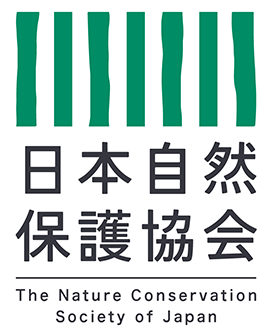

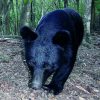
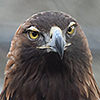
 主な活動 TOP
主な活動 TOP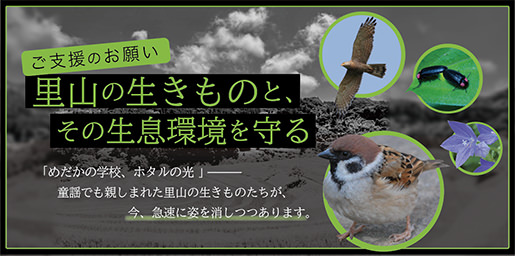
 支援の方法TOP
支援の方法TOP 会員制度/入会申込み
会員制度/入会申込み 遺贈・遺産・お香典のご寄付
遺贈・遺産・お香典のご寄付 チャリボン(本・DVD等での寄付)
チャリボン(本・DVD等での寄付) お宝エイド(不用品の買取寄付)
お宝エイド(不用品の買取寄付) 寄付金控除・褒章制度について
寄付金控除・褒章制度について その他の支援方法
その他の支援方法 講習会日程一覧・お申込み
講習会日程一覧・お申込み
